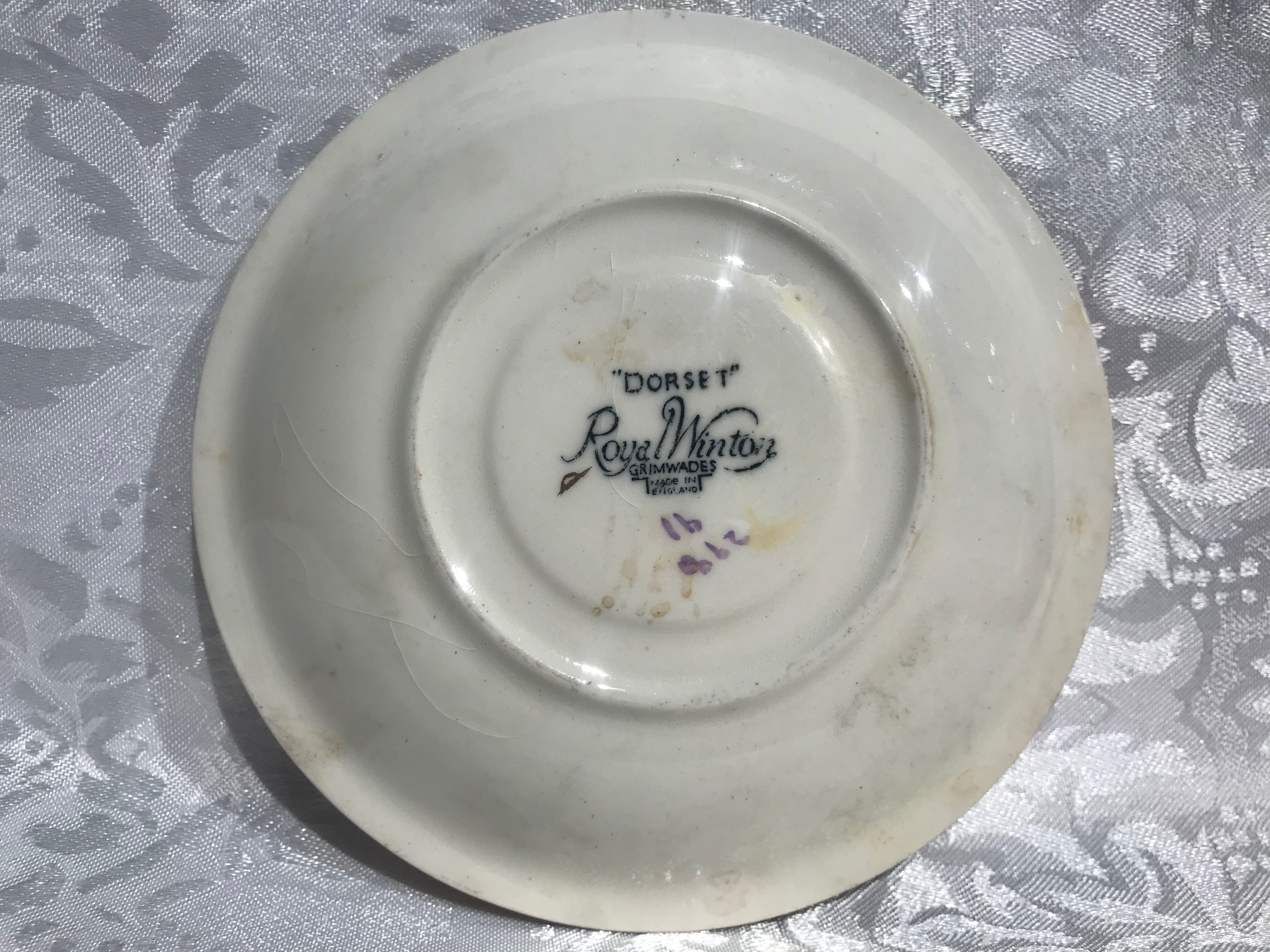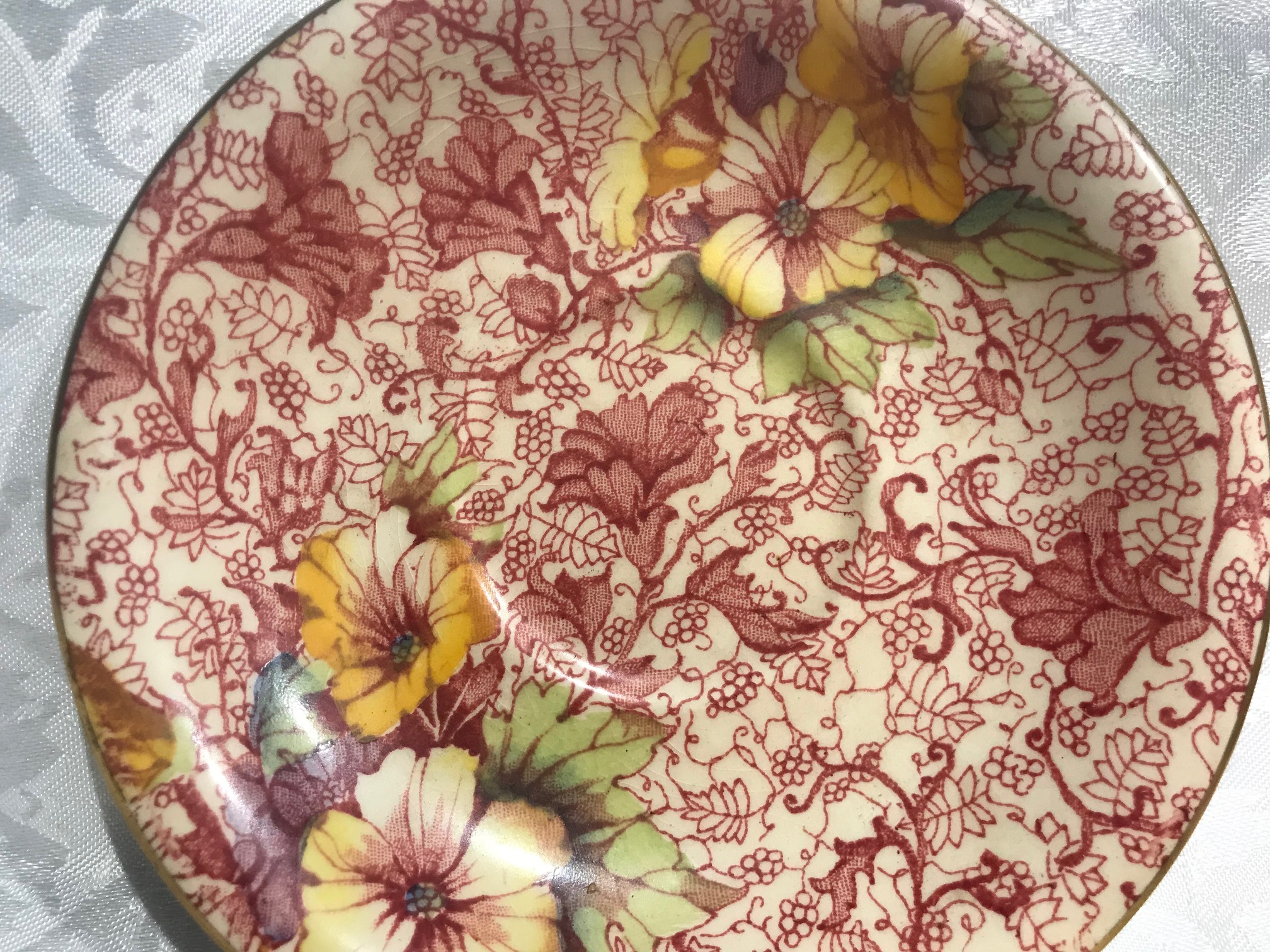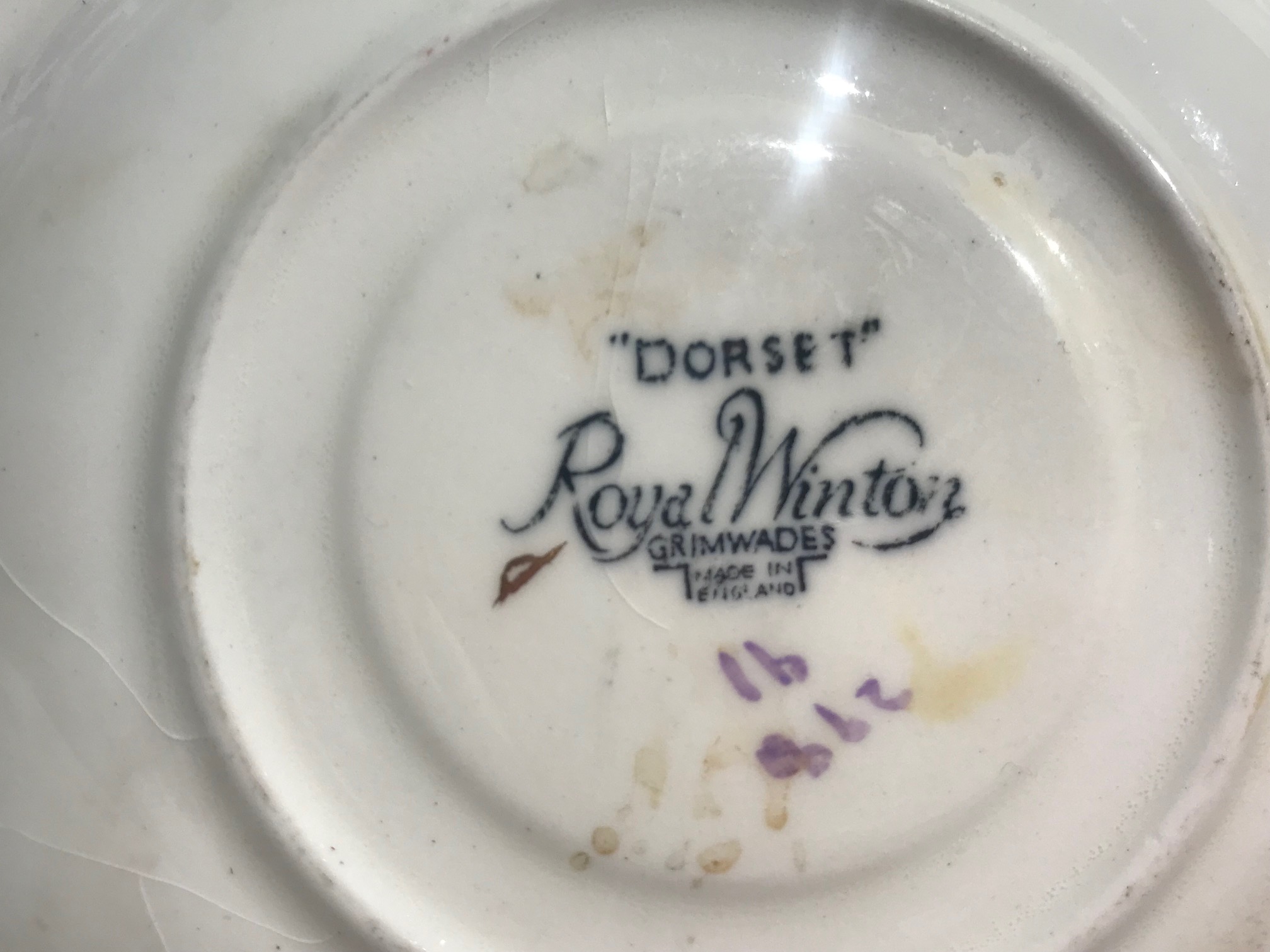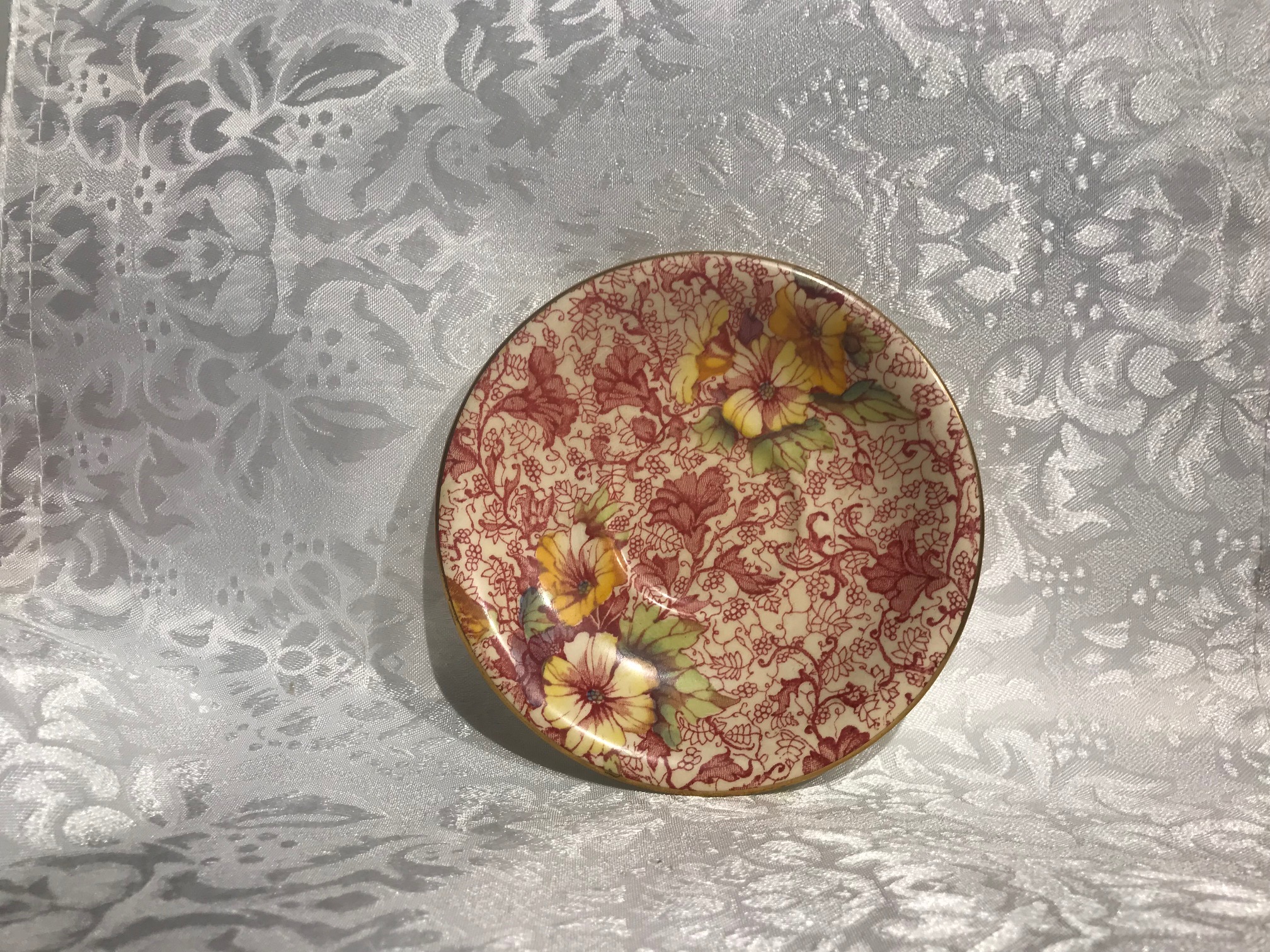Royal Winton Dorset Grimwades Made in England Saucer: 57,700 ppm Lead. 90 ppm is unsafe for kids.
When tested with an XRF instrument the dish tested here had the following readings:
Reading in the center / food surface of the dish:
- Lead (Pb): 57,700 +/- 1,800 ppm
- Tin (Sn): 2,393 +/- 136 ppm
- Iron (Fe): 973 +/- 218 ppm
- Vanadium (V): 76 +/ 34 ppm
- Titanium (Ti): 112+/- 47 ppm
- Non-Detect (Negative) for Cadmium, Antimony, Arsenic and Mercury.
To learn more about XRF testing, click here.
All results reported on this blog are science-based, and replicable. Testing is done for a minimum of 60 seconds per component unless otherwise noted. Components are tested multiple times to confirm the levels of toxicants found. The XRF instrument used is the Niton XL3T – the same instrument used by the United States Consumer Product Safety Commission (CPSC) for testing for Lead in consumer goods. Metals not detected by the XRF instrument (in “consumer goods” mode) are not listed in the above reading set.
How much Lead is “too much” Lead?
For context, the amount of Lead that is considered unsafe (and illegal) in newly manufactured products “intended for use by children” is anything 90 ppm or higher in the paint, glaze or coating and anything 100 ppm or higher in the substrate (in the case of a ceramic dish, this would be the base ceramic of the dish – under the glaze.) The standards for children’s items are for XRF-detectable total Lead content (not leach-test results – which is a different standard / different type of testing.) 57,700 ppm Lead is considerably higher than 90 ppm Lead!
How is it legal for a dish to have this much Lead?
Dishes are not regulated in the same way as items intended for use by children – as they are not considered (by our regulatory agencies) to be “items intended for use by children.” Antique and vintage dishware were subjected to even less stringent regulatory standards (or none at all, depending on the year made) than modern dishware. Modern dishware needs to comply with leach testing standards at the time of manufacture – but may still contain high levels of Lead in the glaze or substrate. Even modern regulatory standards do not attempt measure, govern or restrict how much Lead may potentially leach from dishes in the future with regular daily use (over years or decades of normal use as intended.) In my opinion, this is a significant regulatory loophole — as frankly I don’t know any children who don’t use dishes and I firmly believe that all dishes should be regulated to at least the same strict standards as items intended for use by children (they should be required to have glaze/paint/coating or decorative elements that is under 90 ppm Lead – as detectable with an XRF instrument.)
To read more about the concern for Lead in vintage and new pottery items, click here.
As always, thank you for reading and for sharing my posts.
Please let me know if you have any questions.
Tamara Rubin
#LeadSafeMama 

Never Miss an Important Article Again!
Join our Email List





Hello
Not sure if this post is still open but I have a Royal Winton Grimwades Lilly Bowl (I believe) and wondered if it would be safe to put produce that does not require refrigeration – on the counter?
I generally or could wash all produce if I used but if unsafe would just donate.
Regards
Diane